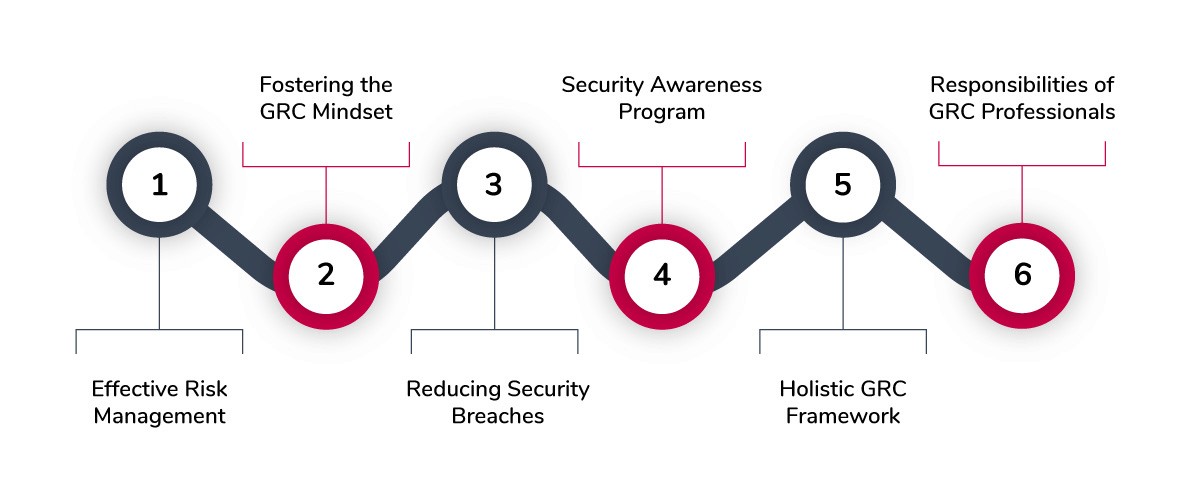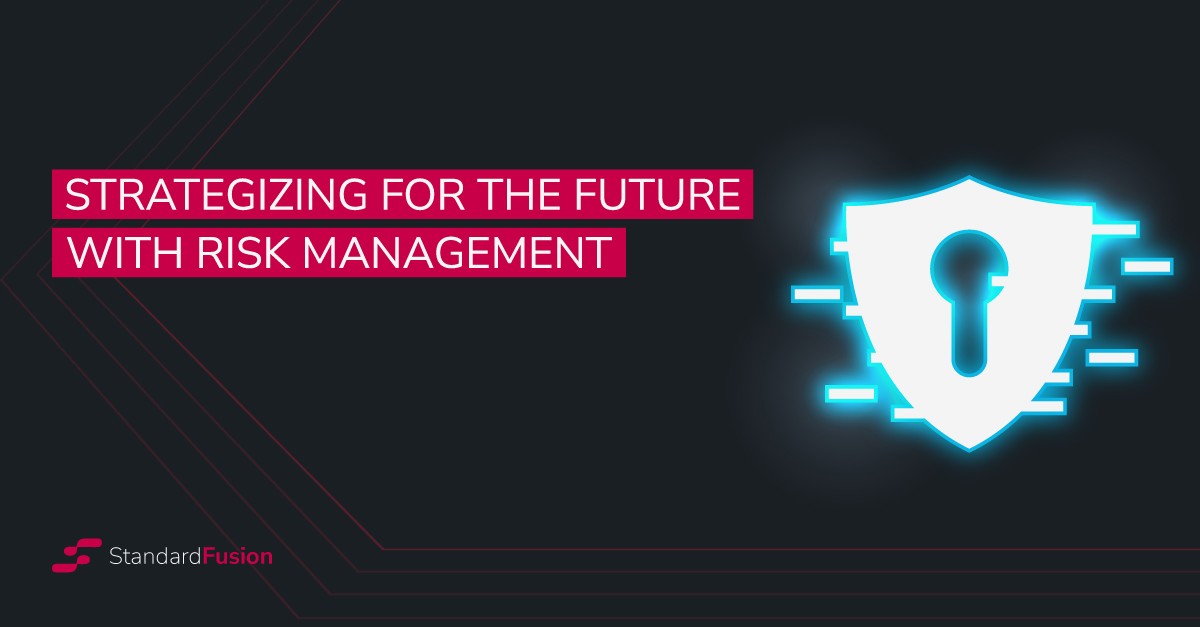Published on: Jul 11, 2023
Nurturing an Unbreachable Business: The Importance of a Security-Aware Culture
In the current fast-paced digital era, a culture of security awareness isn't just necessary - it's the backbone of any resilient business.
In this article, you'll explore the essence of security awareness, how GRC reinforces it, the right GRC mindset, and the 10 steps to building a culture focused on security within your organization.
Ready to learn how to nurture a strong culture, ensuring your organization's safer, resilient future?
Let's begin!
What is a Culture of Security Awareness?
The first thing you need to know is that a culture of security awareness exists when norms and values are consistent with information security policies and best practices. Employees that understand and prioritize security standards and procedures inside a business are said to be part of a security-aware culture.
This culture is defined by a shared sense of responsibility for preserving the security of information and assets.
Why is this important?
Because employees who work in an environment where security is valued are more likely to be aware of potential risks and threats. More importantly, they will take steps to prevent them.
To achieve this, employees must follow security standards, report any unusual behaviour, and be attentive to any security breaches. The organization's norms and values must be consistent with this culture.
One key factor.
Management must show support, encouragement, and gratitude to staff members who actively contribute to keeping the company secure.
The Importance of a Strong Culture of Security Awareness
A little bit of data here. According to Cybercrime Magazine forecasts, businesses will lose nearly $10.5 trillion in 2025, or $19,977,168 each minute, as a result of cybercrime. A strong cybersecurity culture is vital for any firm to secure its information, assets, and reputation.
Why should you care about this?
Because it helps create a workforce that is aware of the potential risks and threats to the organization and takes proactive steps to prevent them. However, this not only safeguards the company but also fosters confidence and trust among stakeholders, clients, and staff.
Any business can benefit from a strong security culture by decreasing the risk of security breaches, reducing the severity of any events that do happen, and enhancing compliance with security laws. Also, it can help with keeping talented workers who value a secure workplace and show dedication to the organization's objectives.
The bottom line is that a strong security culture is crucial for every organization's long-term performance and sustainability because it protects its people, information, and reputation.

The Role of GRC in Building a Culture for Security
Building a strong culture of security inside your business can be greatly aided by a well-designed Governance, Risk, and Compliance (GRC) program. GRC enables different departments and stakeholders to work together to identify, assess, and address risks.
Through collaboration and coordination, GRC facilitates risk management within the organization. This encourages teamwork to deal with security concerns and fosters a culture of shared responsibility for security.
Is there something else?
Yes!
By establishing internal policies and procedures that adhere to security best practices and laws, GRC can also help in changing behaviour. This involves holding routine security awareness training to inform staff members of the value of security and their part in defending the company.
Policies and procedures provide staff with clear guidance on what is expected of them in terms of security. This helps to ensure that staff understand their obligations and the importance of security.
Internal documentation makes certain that security measures are applied consistently and uniformly. This reduces the likelihood of security breaches caused by inconsistencies or deviations in security practices.
How can you make it even easier?
Well, GRC tools such as StandardFusion can enhance security awareness by setting up best practices and governance to ensure that everyone understands the risks of their actions. This fosters a security-oriented workplace culture where everyone acknowledges the importance of security and works together to maintain it.
A good Governance, Risk, and Compliance (GRC) program can benefit an organization in multiple ways. Moreover, it can help them work together more effectively, change people's behaviour, and increase their security awareness.
You can do it by establishing rules and procedures. Why?
Because, people are taught how to follow these rules, and safety measures are put in place to ensure compliance with laws. This helps create a culture of security across the whole organization.

What is and How to Build the Right GRC Mindset to Motivate Security Awareness
Simply put, the GRC mindset is centred on identifying and minimizing risks and vulnerabilities that may affect an organization's capacity to meet its operational objectives.
How to do it, though?
Let's see the steps to build the right GRC mindset to foster security awareness.
1) Effective Risk Management
GRC professionals can help everyone in the organization understand how their actions can impact business goals. They do this by explaining the risks involved in the company's activities.
They also promote good risk management practices and provide training to staff. This helps to create a culture of risk management within the organization. By doing this, they ensure that risk management is an integral part of the organization's culture and operations.
2) Fostering the GRC Mindset
It is a method of thinking that gives the notions of Governance, Risk Management, and Compliance priority in all organizational decision-making processes.
This means understanding the goals, risks, and rules that apply to how the organization does business. GRC professionals need to know everything about the company's business, operations, risk profile, and the rules and regulations that control it.
3) Reducing Security Breaches
In order to reduce the danger of a breach, GRC professionals would collaborate with IT and security teams to build and implement the proper measures. For instance, GRC experts may spot a weakness in the company's IT system that a hacker could take advantage of.
The need to adhere to security rules and procedures, such as strong password management, frequent software upgrades, and data backups, would also be made clear to staff members through training and education.
4) Development of a Security Awareness Program
GRC experts can contribute to the development of a culture of security awareness and responsibility. They do it by including all stakeholders in the risk management process.
Employees can benefit from understanding how their actions can affect the company's capacity to meet its objectives. Also, and much more relevant, how they can help to reduce risks and vulnerabilities.
5) Establish a holistic GRC Framework
GRC specialists should work to establish a holistic GRC framework that covers all facets of the organization's security posture in order to build a security-aware culture. This includes:
Identifying potential risks
Creating policies and procedures to mitigate them
Monitoring
Enforcing adherence to rules and policies, and
Delivering ongoing training and education to staff members. This ensures they are aware of security risks and their roles in upholding the organization's security posture.
6) Responsibilities of GRC Professionals
The mission of GRC specialists is to assist the organization to achieve its goals while effectively managing risk. They strive to establish a balance between risk and profit while also ensuring that the company complies with applicable laws, regulations, and industry standards.
This includes striking a balance between teaching employees and stakeholders about risk management and compliance and establishing channels and safeguards for operations and innovation.
GRC professionals implement controls and safeguards to guarantee that the organization complies with applicable laws and regulations. By doing so, they help the organization to achieve its aims in an innovative and responsible manner.

The bottom line?
GRC mindset is essential for fostering a security-aware culture inside a company since it offers a comprehensive strategy for risk management and compliance assurance while meeting business goals.
10 Steps to Building a Strong Security-Aware Culture
This section will go in-depth into relevant aspects, such as training, policy implementation, consistent updates for enhanced cybersecurity, and more.
Let's begin with the 10 steps.
1) Make GRC a priority
GRC professionals collaborate closely with the organization's leadership and stakeholders to ensure that GRC practices correspond with the strategic aims and objectives of the organization.
Remember, your organization must prioritize Governance, Risk, and Compliance.
The entire team has to be committed to risk management and compliance and understand how it contributes to our long-term success.
2) Enforce Policies
Policies help with the establishment of clear expectations for the proper use and protection of the organization's assets and data, establishing a baseline of security awareness and ensuring that everyone understands their responsibility in protecting the organization.
3) Determine the current level of security awareness
Begin by determining the current degree of security awareness among your workers, subcontractors, and other stakeholders. You can accomplish this via surveys, interviews, and other techniques.
4) Create a security awareness program
Create a security awareness program that is customized to the organization's unique needs. Furthermore, the program should include measures for employee education, training, and communication to assist them in understanding the value of security and their part in preserving it.
5) Conduct security awareness training
Conducting security awareness training sessions can assist in educating staff members about the threats posed by cyber-attacks and equipping them with the information and abilities required to safeguard the assets and data of the company.
6) Use real-world examples
Real-world examples should be used to demonstrate the relevance of security. Provide examples of data breaches or cyber-attacks that have impacted other organizations.
7) Role of Senior Leadership
Senior leadership should be involved in the security awareness program. When senior management backs and promotes the program, it sends a clear message to employees about the importance of security.
8) Reinforce the message
Reiterate the security awareness message on a frequent basis. This can be accomplished through the use of posters, emails, newsletters, and other forms of communication.
9) Provide incentives
Employees that demonstrate effective security measures should be rewarded. For example, you may award a prize to the employee who identifies security risks in the firm.
10) Measure and assess
Ongoing monitoring and evaluation of the security awareness program's efficacy should be conducted. This will assist you in identifying areas for development and ensuring that the program remains relevant and effective over time.
Key Takeaways
These are the most relevant points you need to remember when talking about security awareness:
A security-aware culture is the cornerstone of a resilient business, safeguarding information and assets.
This culture drives employees to prioritize security and act proactively against potential risks and threats.
A strong culture of Security Awareness significantly reduces the risk of security breaches and enhances compliance with security laws.
Management support is critical in fostering a culture of security awareness, where security values are embedded in organizational norms.
GRC programs are vital tools in developing a robust culture of security awareness. They coordinate efforts for detecting, evaluating, and managing risks.
An effective GRC mindset promotes an understanding of the organization's goals, objectives, risks and relevant laws, crucial for a security-aware culture.
GRC professionals play a key role in minimizing risks and vulnerabilities that can impact an organization's capacity to meet its objectives.
Creating a comprehensive security awareness program is key to nurturing a strong security culture.
It's crucial to have the support of senior leadership for a successful security awareness program.
Consistent reinforcement, measurement, and assessment are essential to ensure the effectiveness of a security awareness program over time.
Building a culture of security awareness is not just a step towards compliance - it's a step towards resilience, growth, and a secure future. Make GRC activities accessible, engage your stakeholders, and build a team that's equipped to face tomorrow's challenges.
Ready to take the first step? Let's connect to show you how StandardFusion's intuitive interface and training resources ensure that all your team members can participate in GRC efforts, regardless of technical expertise, leading to a more engaged and knowledgeable workforce.







